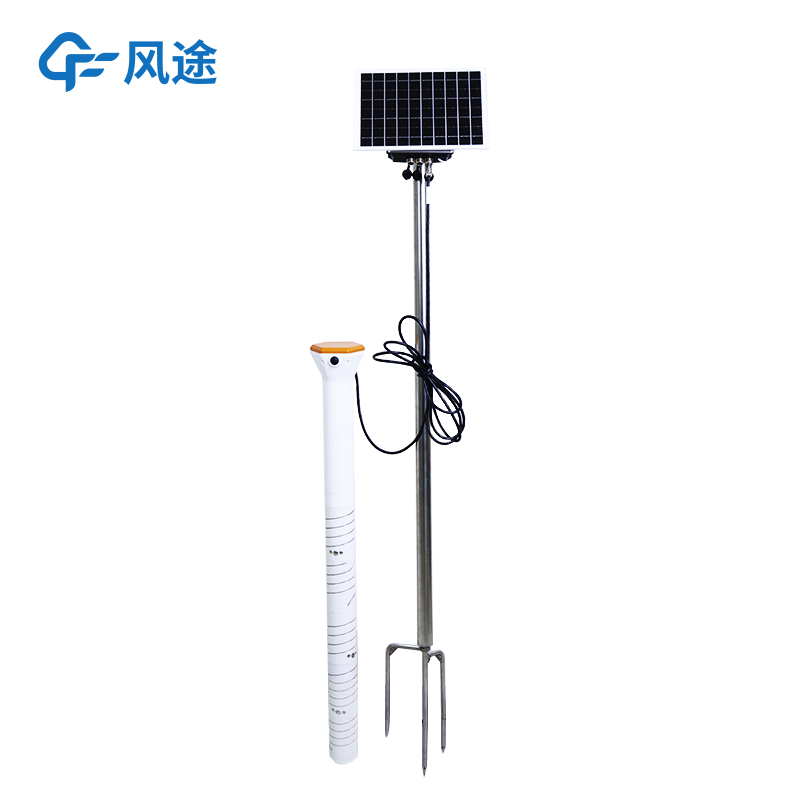Tianyi Sensor IOT Technology Co., Ltd
Sales Manager:Ms. Emily Wang
Cel,Whatsapp,Wechat:+86 15898932201
Email:info@fengtutec.com
Add:No. 155 Optoelectronic Industry Accelerator, Gaoxin District, Weifang, Shandong, China

Sales Manager:Ms. Emily Wang
Cel,Whatsapp,Wechat:+86 15898932201
Email:info@fengtutec.com
Add:No. 155 Optoelectronic Industry Accelerator, Gaoxin District, Weifang, Shandong, China
time:2025-07-11 08:49:34 source:Weather Station viewed:163 time
In the development process of smart agriculture, various advanced technologies and equipment are continuously updating agricultural production modes. As a core tool, the soil moisture monitoring station is deeply integrating into the modern agricultural production system.
Soil moisture, i.e., the soil humidity condition, directly affects every link in the growth cycle of crops. Appropriate humidity can ensure seed germination, root development, and nutrient absorption, which is the basis for high and stable yields. Traditional monitoring relies on manual sampling and measurement, which not only has a limited coverage range and poor data timeliness but also requires a lot of labor costs, making it difficult to meet the management needs of large-scale agriculture.
The soil moisture monitoring station achieves precise monitoring by integrating multiple sensing technologies. The soil moisture sensor equipped in the device adopts the principle of frequency domain reflection. It emits electromagnetic signals of specific frequencies and directly outputs data on the volume water content of the soil based on the correlation between the soil dielectric constant and water content, with a measurement accuracy of ±2%. The supporting temperature sensor (measuring range from -30℃ to 70℃) and conductivity sensor (measuring range from 0 to 20000μS/cm) simultaneously record the soil temperature and heat conditions as well as salt content, forming a multi-dimensional soil environment data matrix.
The device uploads the real-time collected data to the management platform through wired or wireless transmission modules. Farmers can check the moisture dynamics of the monitoring points at any time through computer clients or mobile terminals, including hourly change curves and historical data comparisons. The system is equipped with a manual threshold adjustment function. When the soil moisture is lower than the critical value of crops (for example, wheat needs to maintain 60%-70% of field capacity during the jointing stage) or higher than the waterlogging critical value, it will send prompts via SMS or platform push to guide farmers in carrying out precise irrigation or drainage operations.
The application value of this device is even greater in large-scale planting scenarios. In field crop planting, a multi-point monitoring network combined with GPS positioning can draw a distribution map of field moisture, realizing zoned irrigation and increasing water resource utilization by more than 30%. By linking moisture data with the irrigation system, the frequency and duration of drip irrigation can be automatically controlled, reducing the waste of water and fertilizer caused by deviations in human judgment.

Reservoir safety, particularly the flood prevention capacity of the vast number of small and medium-sized reservoirs, is a critical yet vulnerable link in China's flood control and anti-flood system. Facing the current situation of numerous reservoirs built in the last century, which generally s...
To meet the needs of air pollution prevention and control, environmental protection authorities require more refined and efficient air quality supervision. However, traditional national standard monitoring stations, despite providing high data accuracy, face limitations such as high construction cos...
The Portable IV Curve Tester FT-IV2 is an instrument specifically designed for outdoor photovoltaic testing, capable of quickly measuring the current-voltage (I-V) characteristic curves of photovoltaic modules or strings.The tester features a maximum voltage measurement range of 1500V and a current...
Ports serve as critical hubs connecting the ocean and land, with numerous vessels entering/exiting and cargo being loaded/unloaded daily. However, due to their unique geographic locations, ports face complex and variable meteorological conditions. Among these, wind speed and direction significantly...